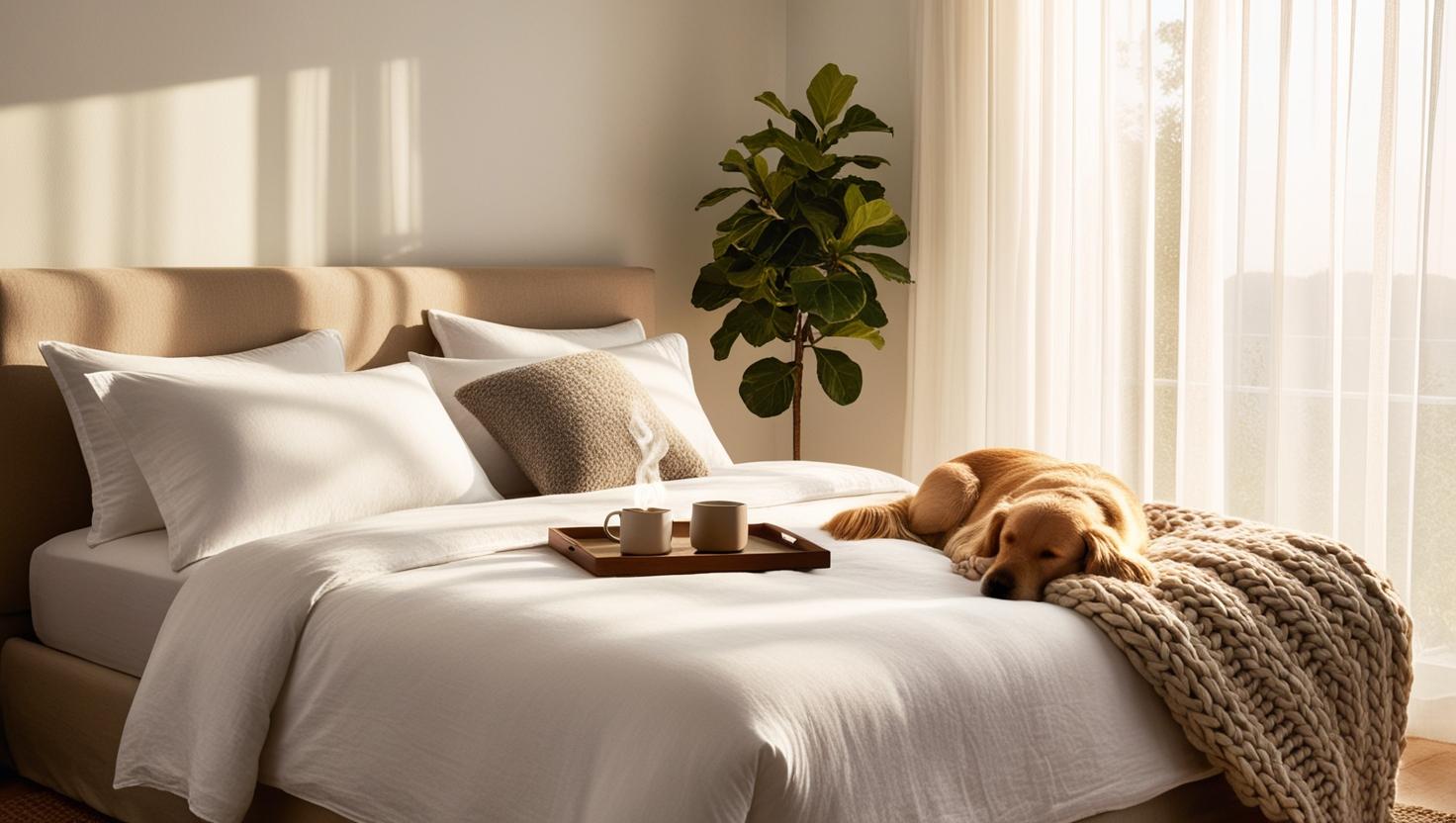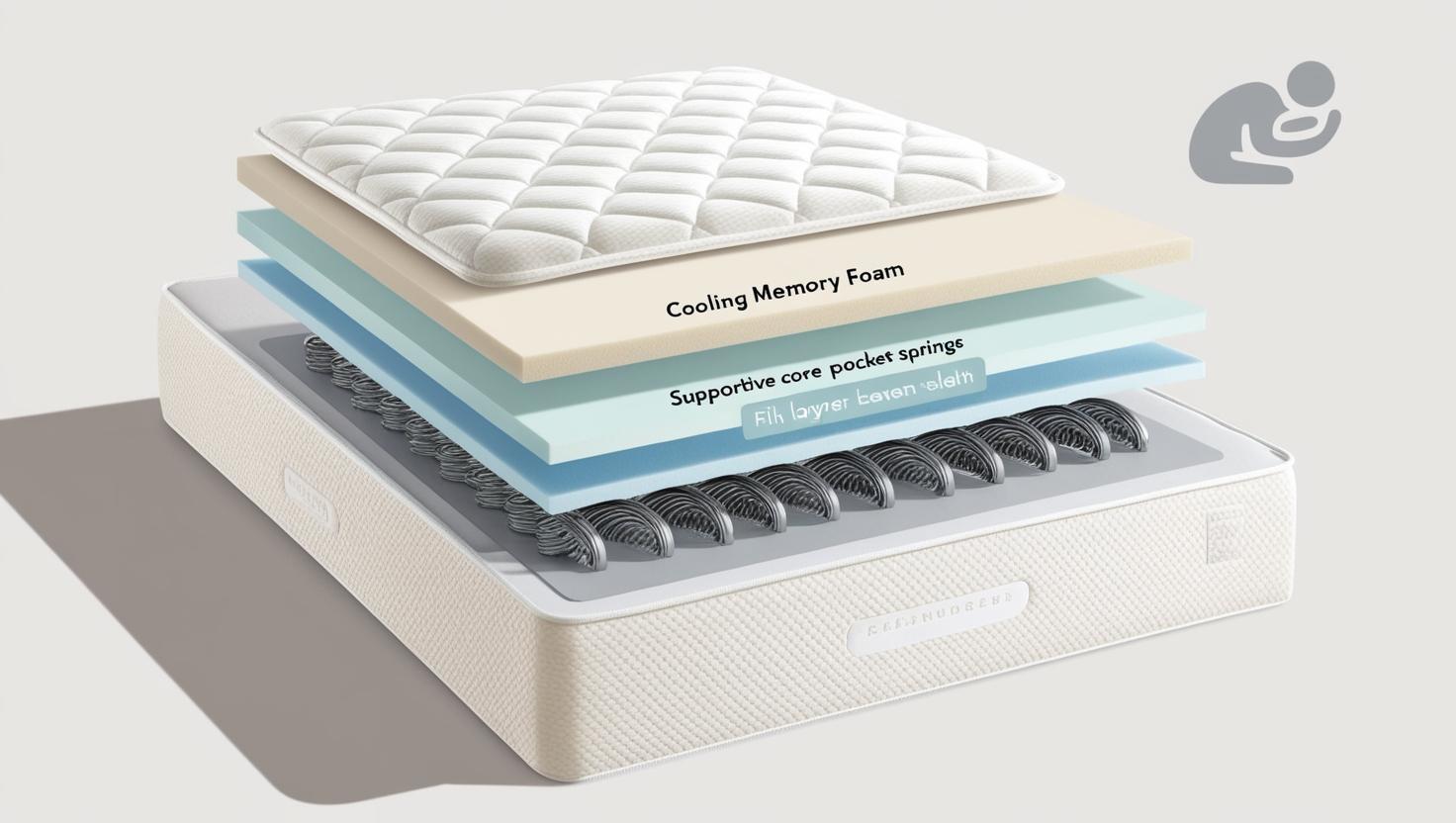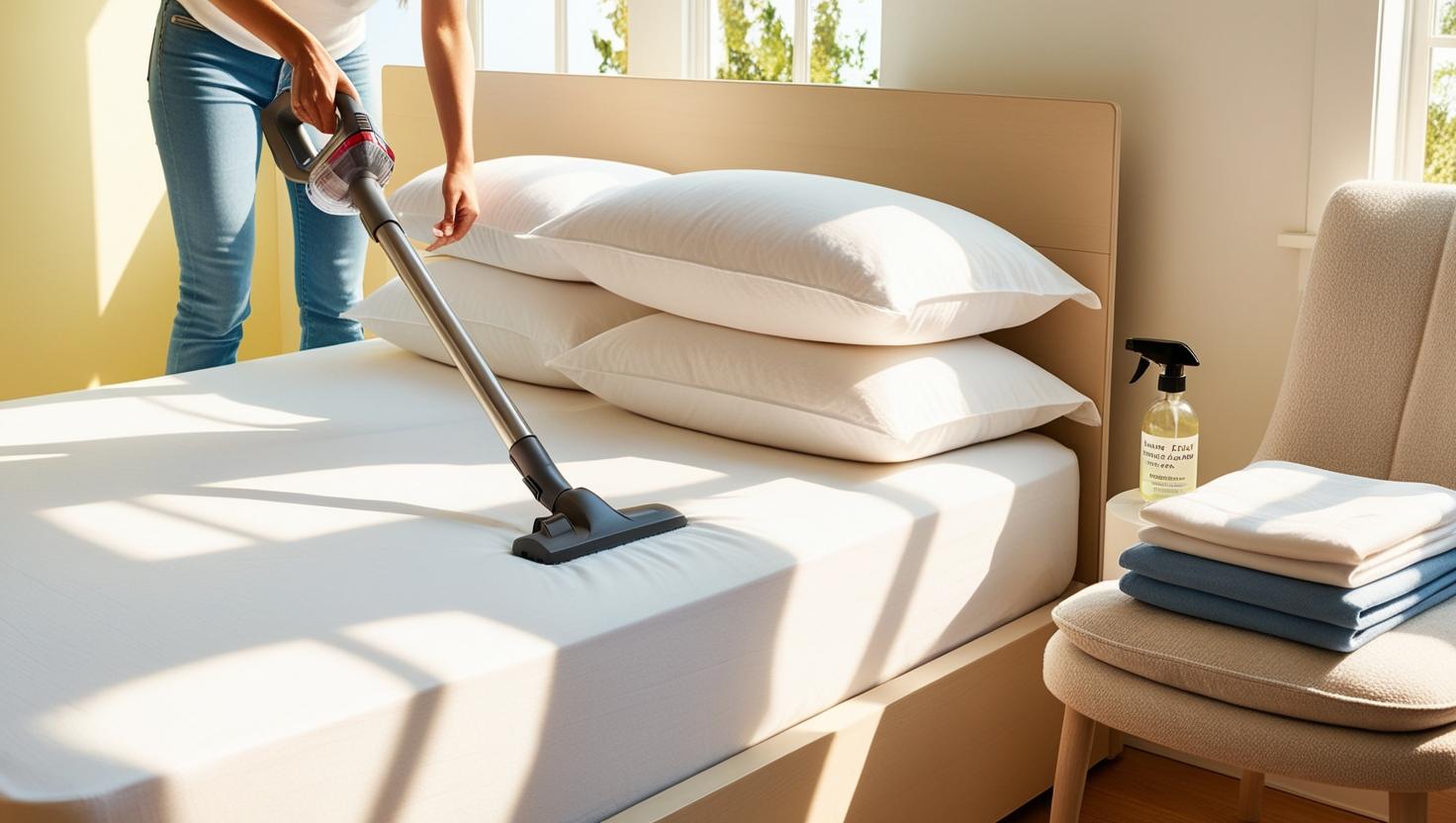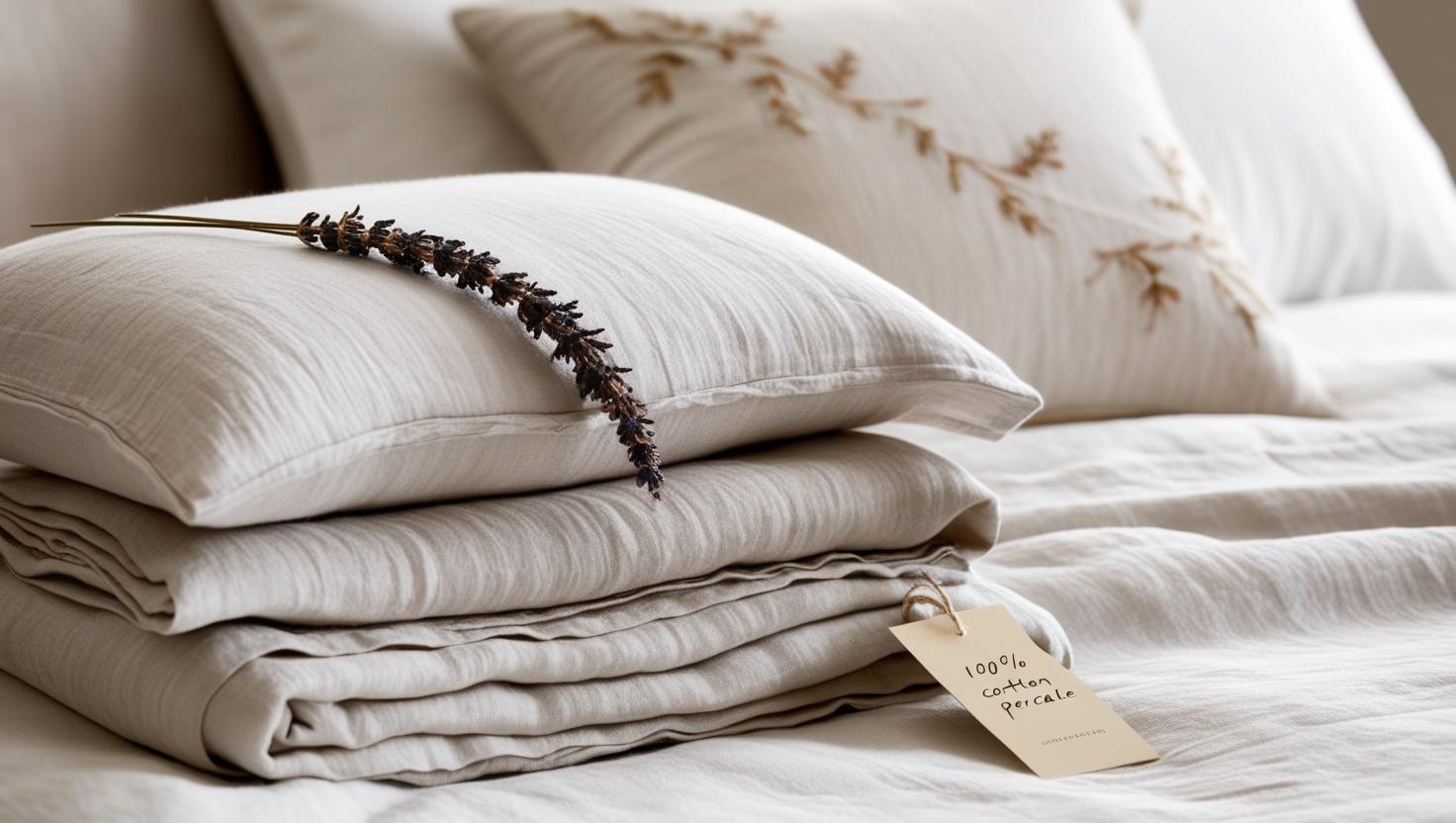
Bedding Materials and Benefits: Your Expert Guide
Understanding bedding materials and benefits is the first step to creating a dreamy sleep sanctuary.
The right sheets, pillows, and mattresses don’t just feel amazing—they actively improve your sleep quality, health, and comfort year-round.
For even more tips, see our ultimate guide on mattress cleaning.
Key Takeaways
- The bedding materials you choose directly affect sleep quality, comfort, and temperature regulation.
- Each bedding type—from cotton to latex—offers unique pros and cons based on your needs.
- Eco-friendly options promote sustainability and wellness without compromising on comfort.
- Regular mattress hygiene extends lifespan and maintains bedding benefits.
- Seasonal bedding swaps help optimize comfort year-round.

Why Bedding Materials and Benefits Matter
Your bedding isn’t just about style—it’s a foundation for great sleep. The bedding materials and benefits you choose influence how breathable, soft, and supportive your bed feels. According to the Sleep Foundation, high-quality bedding helps regulate your body temperature and reduces irritation, setting the stage for deeper, more restorative rest.
Think of your bedding as the clothing your body wears for 8 hours every night. Just like you wouldn’t wear scratchy, ill-fitting clothes all day, your sleepwear environment needs to feel just right. Breathable fabrics prevent overheating, while hypoallergenic materials reduce nighttime sniffles and irritation. When every layer—from your mattress to your duvet—works in harmony, the result is smoother sleep cycles and a more refreshed you.
Choosing the right materials can even improve skin health, reduce exposure to allergens, and foster a sense of cozy tranquility. For example, switching from synthetic sheets to organic cotton has helped many readers notice fewer nighttime breakouts and less tossing and turning. Ultimately, the right bedding transforms your bedroom from a basic necessity to a nightly retreat you crave.
Bottom line: your sleep environment should work for you, not against you. Investing in quality bedding pays off in better rest, better mornings, and a better life.
Start with the Mattress: Building the Foundation
Your mattress is the backbone of your sleep setup—literally. It determines how your body is supported, how well your spine stays aligned, and how comfortable you feel through the night. If you’re waking up sore or your mattress is over 7 years old, it might be time for an upgrade.
There’s no one-size-fits-all answer, which is why it’s helpful to understand your options when it comes to bedding materials and benefits at the mattress level. For an in-depth comparison, explore our guide to types of mattresses where we explain firmness, responsiveness, and material pros and cons.

Common Mattress Types Explained
- Memory Foam: Contours to relieve pressure points; great for side sleepers.
- Innerspring: Bouncy, breathable; ideal for hot sleepers and stomach sleepers.
- Hybrid: Combines foam and coils; versatile and supportive.
- Latex: Naturally cooling, responsive, and eco-conscious.
Need help narrowing it down? Check out our post on Choosing the Right Bedding and Mattress for detailed decision-making tips.
Mattress Hygiene: Keep Things Fresh
Buying a great mattress is a big investment—but keeping it clean is just as important for protecting its longevity and your health. Over time, mattresses can accumulate dust mites, sweat, dead skin, and allergens. A well-maintained mattress supports the bedding materials and benefits you paid for and ensures they last as long as possible.

- Vacuum regularly: Every 1–2 months to remove dust and allergens.
- Spot-clean stains: Use mild detergent or vinegar solutions promptly.
- Use a mattress protector: Waterproof and breathable protectors prevent buildup.
- Rotate it seasonally: Helps avoid sagging and wear.
Explore our full mattress hygiene and cleaning guide for deep-cleaning tips.
Comparing Bedding Materials: What to Choose
Sheets, comforters, pillowcases—they all contribute to your comfort and enhance the overall bedding materials and benefits. Each material feels different, regulates temperature uniquely, and has its own care routine.

| Material | Benefits | Potential Drawbacks |
|---|---|---|
| Cotton | Breathable, durable, soft. | Wrinkles; premium types costly. |
| Bamboo | Hypoallergenic, eco-friendly, moisture-wicking. | Can pill; slippery texture. |
| Linen | Very breathable, durable, absorbent. | Wrinkles easily; rough initially. |
| Silk | Luxurious, regulates temp, hypoallergenic. | Delicate; high maintenance. |
| Microfiber | Affordable, wrinkle-resistant, soft. | Less breathable; may trap heat. |
Pro tip: Try layering different materials for seasonal flexibility. For more, check out our seasonal bedding guide.
Eco-Friendly vs. Synthetic: What’s Right for You?
If you’re looking to reduce your environmental footprint, natural options like bamboo, organic cotton, and linen are biodegradable and renewable. Look for GOTS and OEKO-TEX certifications to ensure safety. Synthetic materials like microfiber are cost-effective and durable, but less breathable.
Real-Life Success: Sarah’s Story
“Bamboo sheets changed my life! They keep me so cool and comfortable. I used to wake up drenched in sweat, but now I sleep soundly through the night.” – Sarah, Cozy Bed Quarters reader
Seasonal Bedding Swaps: Stay Comfy All Year
Your bedding setup should shift with the seasons. Lightweight cotton or bamboo in summer, flannel and wool in winter. Linen is perfect for spring and fall transitions.

Explore More on Cozy Bed Quarters
Final Thoughts: Build Your Best Sleep Sanctuary
When you invest in top-notch bedding materials and benefits, you’re investing in more than just a good night’s rest. You’re prioritizing your wellness, comfort, and the planet—one cozy layer at a time.
FAQ
- What are the best bedding materials for hot sleepers?
- Bamboo, linen, and latex are top choices thanks to breathability and cooling properties.
- How often should I replace my bedding?
- Sheets and pillowcases: every 1–2 years. Mattresses: every 7–10 years.
- Are synthetic bedding materials bad for health?
- No, but they may trap more heat and allergens compared to natural fabrics.
- Can bedding materials really affect skin health?
- Yes, natural hypoallergenic fabrics like silk or organic cotton reduce irritation and acne.
